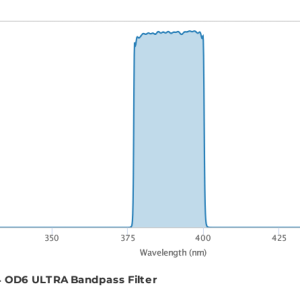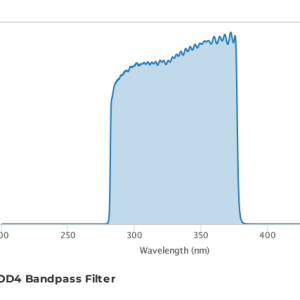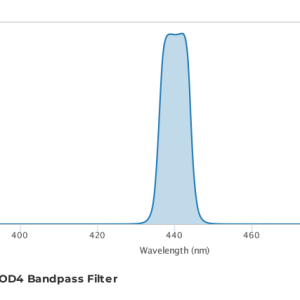Description
| Center Wavelength | 604 nm ± 2.0 nm |
|---|---|
| FWHM | 50 nm Nominal |
| † Transmission Band(s) | 582 to 626 nm > 95% T Average |
| Transmitted Wavefront Error | < 0.25 Wave RMS @ 632.8nm |
| Blocking Level | OD6 |
| * Blocking Range(s) | OD6: 300 to 569 nm, 640 to 900 nm |
| Parallelism | < 3.0 Arcseconds |
| Dimensions | 25.0 mm Diameter |
| Substrate Type | Fused Silica |
| Filter Thickness | 2.0 mm |
| Assembly Type | Anodized Aluminum Ring |
| Assembly Thickness | 3.5 mm |
| Custom Sizing Available | yes |
| Main Fluorophore(s) | TagRFP |
| Alternate Fluorophore(s) | 5-TAMRA (pH7), Alexa Fluor® 568, Alexa Fluor® 610 R-PE, Amplex UltraRed, ATTO 565, ATTO RHO11, ATTO RHO3B, BO-PRO-3, BOBO-3, CF568, CF570, DsRed, DsRed Express T1, DsRed Tandem Dimer2, dTomato, FluoSpheres® Red, FusionRed, KFP-Red, Lissamine Rhodamine, LOLO-1, Magnesium Orange, mApple, Merocyanine 540, MitoTracker® Orange, mStrawberry, mTangerine, PA-TagRFP, pHrodo® succinimidyl ester, Pro-Q® Diamond, Rhod-2, Rhodamine (phalloidin), Rhodamine Red-X, Spectrum Orange, tdTomato, TRITC, TurboRFP |
*Auxiliary blocking typical based on the displayed spectrum.





